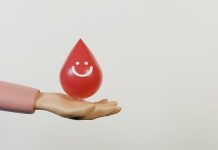
Heart attacks are serious medical emergencies that occur when the flow of blood to the heart is blocked, often by a blood clot.
This can cause damage to the heart muscle, and understanding the stages of a heart attack can be vital for recognizing the signs early and seeking timely treatment.
Let’s break down the journey of a heart attack, from the early warnings to the recovery process.
The Prelude: Early Warning Signs
A heart attack might seem sudden, but it often comes with advance warnings.
These can include chest pain or discomfort, which feels like an uncomfortable pressure, squeezing, fullness, or pain in the center of your chest that lasts for more than a few minutes or goes away and comes back.
Other symptoms might include shortness of breath, nausea, lightheadedness, or discomfort in other areas of the upper body like one or both arms, the back, neck, jaw, or stomach.
These symptoms can occur hours, days, and even weeks before the actual heart attack, serving as a critical window for intervention.
The Onset: Acute Phase
The acute phase begins when the heart muscle starts to suffer from a lack of oxygen due to the blocked blood flow. This is when the classic symptom of chest pain reaches its peak.
The pain can be severe and is sometimes accompanied by a feeling of pressure or squeezing in the chest. During this stage, parts of the heart muscle begin to get damaged or die because they’re not receiving enough oxygen.
The quicker the blockage is removed and blood flow is restored, the better the chances of survival and less damage to the heart muscle.
The Blockage: Culprit Behind the Crisis
The most common cause of a heart attack is coronary artery disease (CAD). In CAD, arteries that supply blood to the heart muscle get narrowed by a buildup of plaque—a mix of fat, cholesterol, and other substances.
If a plaque ruptures, a blood clot can form on its surface, completely blocking the flow of blood to parts of the heart muscle. This blockage is what leads to a heart attack.
The Treatment: Emergency Response
Treatment for a heart attack aims to restore blood flow to the heart as quickly as possible.
Emergency treatments include medications like aspirin to thin the blood and prevent further clotting, and thrombolytics, also known as clot busters, to dissolve any blood clots blocking the arteries.
In some cases, a procedure called angioplasty is performed to open up the blocked artery using a small balloon and possibly place a stent to keep the artery open.
The Recovery: Path to Healing
Recovery from a heart attack varies depending on the severity of the attack and the damage to the heart muscle.
It typically involves cardiac rehabilitation, a medically supervised program designed to improve heart health through exercise, education on heart-healthy living, and counseling to reduce stress.
Lifestyle changes, such as eating a balanced diet, quitting smoking, and managing stress, are crucial to preventing future heart attacks.
Medications may also be prescribed to manage heart disease risk factors like high blood pressure, cholesterol, and diabetes.
In Conclusion
Understanding the stages of a heart attack—from recognizing the early warning signs to undergoing treatment and recovery—is crucial for saving lives and minimizing heart damage.
Being aware of these stages empowers individuals to act swiftly in the face of a heart attack, whether it’s seeking emergency care for oneself or someone else.
Remember, time is muscle in the context of a heart attack. The faster you act, the better the chances of survival and recovery.
If you care about heart disease, please read studies that herbal supplements could harm your heart rhythm, and how eating eggs can help reduce heart disease risk.
For more information about heart health, please see recent studies that apple juice could benefit your heart health, and results showing yogurt may help lower the death risks in heart disease.
Copyright © 2024 Knowridge Science Report. All rights reserved.



